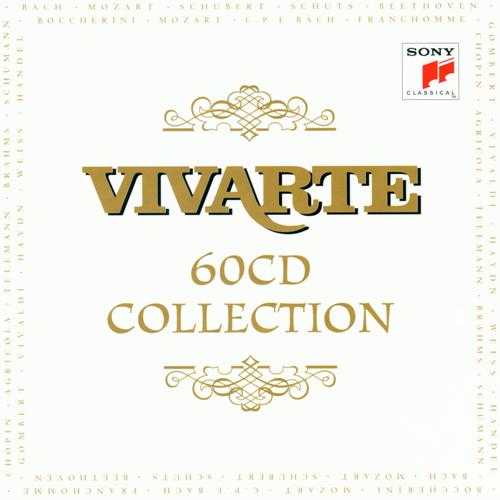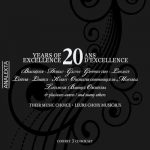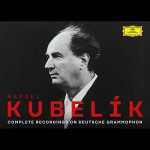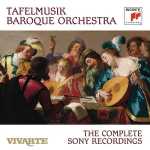
Composer: Franz Joseph Haydn
Performer: Tölzer Knabenchor
Orchestra: Tafelmusik Orchestra
Conductor: Bruno Weil
Audio CD
Number of Discs: 2
Format: FLAC (tracks+cue)
Label: Sony
Size: 357 MB
Recovery: +3%
Scan: yes
Gabriel – Ann Monoyios
Uriel – Jörg Hering
Raphael – Harry van der Kamp
Eva – Ann Monoyios
Adam – Harry van der Kamp
CD 1
01. Overtüre – Die Vorstellung des Chaos
02. Im Anfang schuf Gott den Himmel und die Erde
03. Nun schwanden vor dem heiligen Strahle
04. Und Gott machte das Firmament
05. Mit Staunen siehet das Wunderwerk
06. Und Gott sprach: Es sammle sich das Wasser
07. Rollend in schäumenden Wellen
08. Und Gott sprach; Es bringt die Erde Gras hervor
09. Nun beut die Flur das frische Grün
10. Und die himmlischen Heerscharen verkündigten
11. Stimmt an die Saiten
12. Und Gott sprach; Es seien Lichter
13. In vollem Glanze steiget jetzt
14. Die Himmel erzählen die Ehre Gottes
15. Und Gott sprach: Es bringe das Wasser
16. Auf starken Fittichen schwinget sich der Adler stolz
17. Und Gott schuf große Walfische
18. Und die Engle rührten ihre unsterblichen Harfen
19. In holder Anmut stehen
20. Der Herr ist groß in seiner Macht
CD 2
01. Und Gott sprach–Es bringe die Erde
02. Gleich öffnet sich der Erde Schoß
03. Nun scheint in vollem Glanze der Himmel
04. Und Gott schuf den Menschen
05. Mit Würd’ und Hoheit angetan
06. Und Gott sah jedes Ding
07. Vollendet ist das große Werk
08. Zu dir, o Herr, blickt alles auf
09. Vollendet ist das große Werk
10. Aus Rosenwolken
11. Von deiner Güt’, o Herr und Gott
12. Der Sterne hellster
13. Nun ist die erste Pflicht erfüllt
14. Holde Gattin, dir zur Seite
15. O glücklich Paar, und glücklich immerfort
16. Singt dem Herren alle Stimmen
From the review in ‘Gramophone’
“The booklet in the new Sony recording from Bruno Weil gives the German text, a close but literate English translation and a substantial, illuminating note from H. C. Robbins Landon. Weil’s reading, using a period orchestra of up to 45 players and an all-male choir of similar strength, is above all a luminous, joyous affair, with generally fleet tempos, nimble, dancing rhythms and a richly communicated sense of delight in the work’s sublime, pre-lapsarian innocence. Tafelmusik equal and sometimes surpass the period orchestras of Hogwood and Kuijken in the point and relish of their playing, and the Tolz Boys’ Choir sing with brio, accuracy and characteristically fresh, bright-edged tone; textures in the great contrapuntal choruses are lucidly sifted, yet the climaxes pack a proper punch.
“Bruno Weil’s direction mingles a sense of spontaneous discovery with a strong feeling for shape and structure and a sharp ear for Haydn’s wonderful orchestral detail chuckling, bantering woodwind counter-melodies in the Adam and Eve duet, for instance, the beautiful sustained viola line in the D major section of the first bass aria, ‘Rollend in schaumenden Wellen,’ or the distinctive, tangy sonorities of valveless horns trumpets and trombones throughout. Like Hogwood, Weil uses the recent edition by Peter Brown (Oxford University Press), based on Haydn’s own performance material; and besides many details of phrasing and dynamics one striking deviation from the familiar edition is the eerily muted brass in the introductory Representation of Chaos. Weil’s eager, vital pacing and judgement of tempo relationships almost invariably feel right, though occasionally I wished for a deeper sense of mystery and reverence: in the sunrise, for instance (too smartly dispatched), the solemn, string-accompanied bass recitative in Part Two (No. 17) or the Hymn in Part Three, where the opening Adagio has a hint of jauntiness in the rhythm and the following Allegretto trips along too briskly–though, as so often, Weil builds the final chordal section excitingly and clinches a blazing final climax.
“The three soloists are all stylish singers, clean of line and tone (vibrato used quite sparingly) and notably flexible in coloratura. They make their mark in recitative (abetted by Geoffrey Lancaster’s inventive fortepiano continuo) and aria, and blend and balance unusually well in ensemble. The gracious, subtly shaped trio in Part Two (No. 19a) is one of the highlights of the performance. If Ann Monoyios’s soprano lacks the hint of tonal depth ideally required by the central part of ‘Nun beut die Flur,’ her purity, freshness and shapely sense of phrase are delectable. And like her male colleagues, she ornaments tastefully at fermatas and cadences. Jorg Hering, a name new to me, is obviously a singer to watch, a compact, elegant tenor with no hint of bleat or strain. ‘Mit Wurd und Hoheit’ is eloquently shaped and coloured, and he uses his words imaginatively in the recitatives. The best-known of the solo trio Harry van der Kamp, can become parched at the top of his compass, and occasionally spoils his legato through verbal over-emphasis. But he has amply resonant low notes for Raphael’s part, sings with plenty of ‘face’ and relishes his zoological extravaganza in Part Two. He is also one of the few basses on disc to sing really softly in the closing D major section of ‘Rollend in schaumenden Wellen.’
“Of the two rival period versions, Hogwood’s, in English, employs an orchestra of 120 and a choir of 80, dose to the forces Haydn had at his disposal at the Creation’s first public performance. The sheer grandeur of sonority is often impressive, but Hogwood’s fast tempos sometimes sound more driven than Weil’s and, with the exception of Anthony Rolfe Johnson’s tenor, neither the soloists nor the direction seem to me quite as characterful or communicative as on the new set. Kuijken’s live recording is the most broadly and fluidly paced of the three, and at times evokes a greater sense of awe and wonder than either Hogwood or Weil. Weil, though, conveys most infectiously the work’s unique joy and exhilaration, and I suspect that his version, recorded with a fine depth of perspective and an almost ideal balance between voices and orchestra, will compete with the likes of Karajan, Dorati, Harnoncourt, and Marriner when I want to hear Haydn’s miraculous score.”




incredible collection of haydn masterpiece